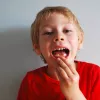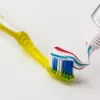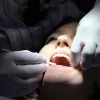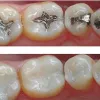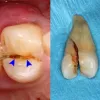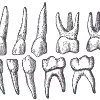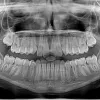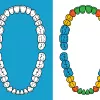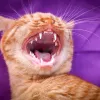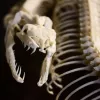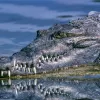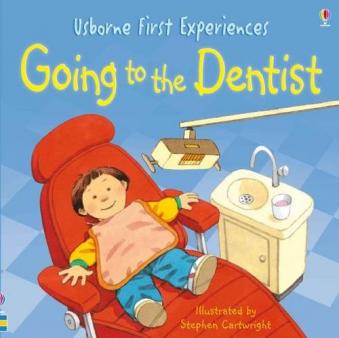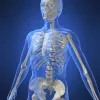Important update from TheSchoolRun
For the past 13 years, TheSchoolRun has been run by a small team of mums working from home, dedicated to providing quality educational resources to primary school parents. Unfortunately, rising supplier costs and falling revenue have made it impossible for us to continue operating, and we’ve had to make the difficult decision to close. The good news: We’ve arranged for another educational provider to take over many of our resources. These will be hosted on a new portal, where the content will be updated and expanded to support your child’s learning.
What this means for subscribers:
- Your subscription is still active, and for now, you can keep using the website as normal — just log in with your usual details to access all our articles and resources*.
- In a few months, all resources will move to the new portal. You’ll continue to have access there until your subscription ends. We’ll send you full details nearer the time.
- As a thank you for your support, we’ll also be sending you 16 primary school eBooks (worth £108.84) to download and keep.
A few changes to be aware of:
- The Learning Journey weekly email has ended, but your child’s plan will still be updated on your dashboard each Monday. Just log in to see the recommended worksheets.
- The 11+ weekly emails have now ended. We sent you all the remaining emails in the series at the end of March — please check your inbox (and spam folder) if you haven’t seen them. You can also follow the full programme here: 11+ Learning Journey.
If you have any questions, please contact us at [email protected]. Thank you for being part of our journey it’s been a privilege to support your family’s learning.
*If you need to reset your password, it will still work as usual. Please check your spam folder if the reset email doesn’t appear in your inbox.
Teeth and dental care
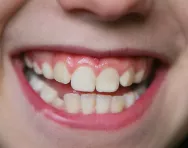
What are teeth and how do we look after them?
Teeth are found in our mouths – we use them to help us eat. Humans have up to 32 adult teeth, made up of four different types. Each type of tooth is designed for a specific job in the eating process – some cut, while other tear and grind our food.
Humans get two sets of teeth in their lifetime, so we need to look after them well and make sure that they don’t rot. Cleaning teeth, eating the right foods, and regular visits to the dentist help to keep our teeth and gums healthy.
Top 10 facts
- Tooth enamel is the hardest substance found in your body.
- Toothpaste has only existed for about 100 years. Before that people cleaned their teeth with things like chalk, charcoal and lemon juice.
- One man, from India, can lift a bike with his teeth – don’t try that at home!
- Even though we should be cleaning our teeth for between 2-3 minutes, most people clean them for around only 30 seconds.
- There are 300 different types of bacteria in plaque.
- The first record of a named dentist is from over 5000 years ago. His name was Hesi-Re and he lived in Egypt.
- Dolphins have the highest number of teeth in the animal world, with 200 filling their mouths at any one time!
- Elephant tusks are the longest teeth in the animal kingdom.
- Because they are getting new teeth on a weekly basis, sharks can have over 20,000 teeth in a lifetime!
- Crocodiles have their teeth cleaned by a small bird that hops inside an open mouth and picks off bits stuck to the crocodile’s teeth.

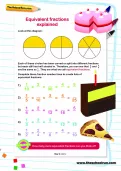
Boost Your Child's Learning Today!
- Start your child on a tailored learning programme
- Get weekly English & maths resources sent direct to your inbox
- Keep your child's learning on track
Did you know?
- Baby teeth can start to appear as early as three months old and should have all arrived by the time a child is three. Occasionally a baby is born with teeth already through. Adult teeth start to push through around about 6 or 7 years old and by the age of 13 they should all be through (apart from your wisdom teeth). Wisdom teeth usually come through by the age of 25 years, but sometimes it can be much later than that.
- Adults can have up to 32 teeth, including 4 wisdom teeth (also sometimes called third molars), but there is often not enough room in an adult’s mouth and jaw for these extra 4 teeth and so they are taken out leaving 28 teeth. Not everyone has wisdom teeth come through.
- Baby teeth not only get the space ready in your mouth for your adult teeth, but they also help with speech development and learning to chew.
- Human teeth are designed for eating a very mixed diet of plants and animal foods. An animal that has a mixed diet is called an omnivore. Carnivores eat meat and have lots of ripping, tearing and crushing teeth, while herbivores have a plant-based diet and so have lots of snipping teeth.
- You should change your toothbrush every 3 months. Toothbrushes become frayed and worn quite quickly and don’t clean your teeth as effectively when they wear down. It is also recommended that you change your toothbrush after a cold, mouth or throat infection. You should always rinse your toothbrush after cleaning, and let it dry with the brush (or head) upright and not in a cupboard – otherwise germs, fungus and bacteria can build up.
Look through the gallery below and see if you can spot the following:
- Baby teeth and eruption of adult teeth
- Brushing teeth
- Adult teeth
- A dentist check-up
- Cavity fillings
- A fractured tooth (Credit: Coronation Dental Specialty Group via Wikimedia)
- Different types of human teeth
- X-ray of a jaw full of teeth
- A teeth diagram
- A cat showing off its teeth!
- A snake skull with teeth
- Scary alligator teeth
Gallery
About
Humans have four main different types of teeth: incisors, canines, pre-molars and molars. Each type of tooth is designed to do different things. Incisors cut food, canines tear food, pre-molars crush food, and molars grind food. Humans are omnivores, which means we eat a mixed diet of plants and meat – this is why our teeth are designed and laid out in our mouths the way they are.
Teeth are made of two main parts: the crown (the bit you can see) and the root (the bit inside your gum that holds your tooth in place).
A tooth is made of four different substances: enamel, dentine, pulp and cementum. The enamel is the bit on the outside of your tooth (it is very hard), while the dentine and pulp are found inside the tooth. The pulp contains the nerves and blood vessels of the tooth. Cementum is the substance at the bottom of the tooth root which helps to anchor it into the jaw bone.
Keeping your teeth and gums healthy is important for a range of reasons – to prevent infection, to keep your teeth strong for eating with, and to avoid damage to the teeth. There are a number of ways that we can look after our teeth. Brushing teeth at least twice a day helps to keep them clean and to get rid of any plaque which might attack the enamel. You should also floss your teeth – this removes bits that get stuck between your teeth as well as plaque. Rinsing with a mouthwash also keeps your mouth and gums clean and healthy.
Visiting the dentist on a regular basis (every six months) means that they can spot any problems early on and can help you to understand how best to look after your teeth. Dentists can also mend any damaged teeth or fill any cavities that may have appeared. Many people also visit a hygienist who gives teeth a deep clean and polish and can advise on ways to keep your teeth clean and healthy.
Your diet also affects how healthy your teeth are. A diet that has a lot of sugary food (and this includes things like dried fruit) can cause tooth decay. Acidic foods can also attack the enamel on your teeth. Dentists recommend that you avoid sugary drinks and eat vegetables, fruit and cheese as snacks. Dentists suggest that drinking milk and water have far less impact on your teeth.
There are many ailments that can occur with teeth, from sensitivity to cavities and broken or infected teeth. Dentists and dental surgeons treat these conditions by doing fillings, capping teeth or even removing teeth. Dentists may also prescribe antibiotics for an infection, just like a doctor might.
Dental cavities are small holes in your teeth caused by tooth decay. Tooth decay happens when bacteria changes sugar and starch into an acid. This acid attacks the tooth and breaks down the enamel. If the tooth is not filled it will continue to rot and become very painful.
Teeth can become sensitive to hot and cold foods. This happens when the part of the tooth that is normally under the gum becomes slightly exposed. This might occur because you brush too hard or you may have gum disease.
Gum disease is when your gums become swollen or infected. It can be very sore and your gums might bleed when you brush your teeth as well as having bad breath. It is caused by the plaque on your teeth building up and damaging your gums.
Words to know
Acid: a substance that has corrosive properties
Adult teeth: the second set of teeth (also called secondary teeth)
Bone: the hard parts of the body that make up the skeleton
Canines: the sharp, tearing teeth found at the side of the mouth behind the incisors
Carnivore: an animal that has a meat focused diet
Cavity: a hole in a tooth usually caused by decay
Cementum: the substance that makes up the part of the tooth root that anchors it into the jaw bone
Crown: the visible part of a tooth
Dentine: the substance found under the enamel in a tooth. It is not as hard as enamel
Dentist: someone who is medically trained to treat teeth
Enamel: the hard outer covering of a tooth
Filling: a substance that is used to fill a cavity
Fluoride: a mineral that can prevent tooth decay by improving the quality of tooth enamel and reducing the ability of bacteria to produce acid
Flossing: using think strips of floss to clean in between teeth
Gingivitis: the scientific name for gum disease
Halitosis: the scientific name for bad breath
Herbivore: an animal that has a meat focused diet
Incisors: the biting teeth found at the front of the mouth
Milk teeth: the first set of teeth (also called primary teeth)
Molars: the teeth found towards the back of the mouth. They are used for chewing and grinding
Nerves: these carry messages to the brain. Nerves can cause severe toothache if they are exposed in any way
Omnivore: an animal that has a mixed diet of plant and meat
Oral hygienist: someone who is trained to clean teeth professionally and advise on how to keep them clean
Plaque: a sticky substance that contains bacteria. It attacks and can damage teeth
Pulp: the substance in the middle of the tooth where nerves and blood vessels can be found
Pre-molars: the teeth used for chewing and grinding. They are found at the side of the mouth behind the canines and in front of the molars
Primary teeth: the first set of teeth (also called milk teeth)
Root: the part of the tooth that is anchored into the gum and jaw. It is not visible
Secondary teeth: the second set of teeth (also called adult teeth)
Toothbrush: a special brush designed to clean tooth. They come in various sizes and can have soft, medium or hard bristles
Wisdom teeth: the final teeth that an adult may or may not get. They are also called the third molars, but are often removed as an adult jaw and mouth does not usually have enough space for them.
Related Videos
Just for fun...
- Next time you clean your teeth, time yourself. You should be spending 2-3 minutes. Time the other members of your family and see how long they brush for!
- Play some dental health games
- Take a teeth quiz
- Label the parts of a tooth
- Can you match animals to their teeth?
- Design a poster promoting good dental care
- Try a toothy activity pack with wordsearches, mazes and more
- Meet the Tooth Defenders in a Colgate cartoon for kids
- Label different kinds of teeth online
- Make an origami tooth
- Complete a BBC Bitesize activity to choose which teeth are best at breaking up different kinds of food
Books about teeth for kids
Find out more
- Read a kids' guide to teeth
- Find out about animal teeth
- Learn about teeth in the future
- Watch a BBC Bitesize video about how teeth help animals eat
Complete TheSchoolRun's activities about teeth, available to subscribers:
See for yourself
- Visit your dentist regularly to help keep your teeth in tip-top condition – if you have any questions about your teeth, your dentist is sure to have the answer!
- The free Brush DJ app makes brushing your teeth fun!
- Visit the British Dental Association Museum
- Visit your local natural history museum and see if they have any animals on display – see if you can work out what they eat from looking at their teeth
- Try out these experiments to learn more about the importance of cleaning teeth
